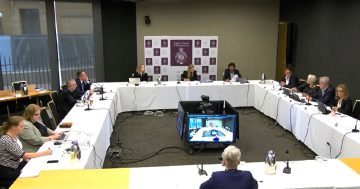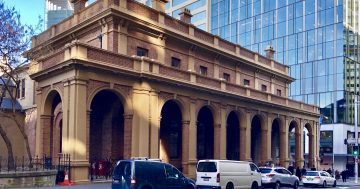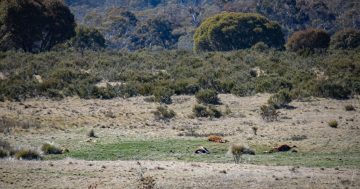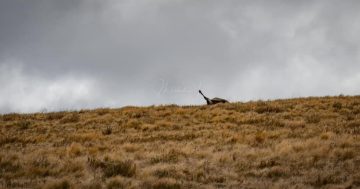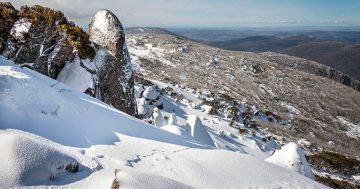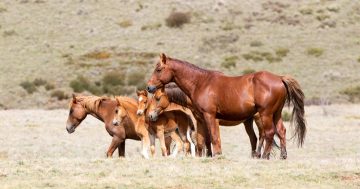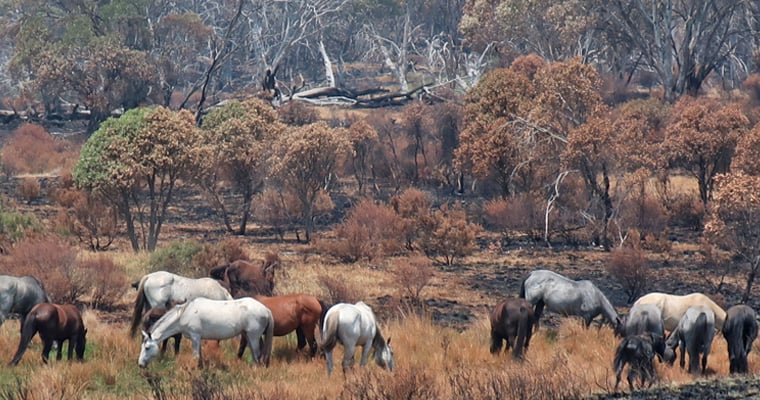
A NSW Upper House inquiry has heard that 8718 wild horses have been removed from Kosciuszko National Park since November 2021, with 5539 of those culled using aerial shooting methods, approved for use in October 2023. Photo: Invasive Species Council.
Conservationists have welcomed new NSW Government data that reveals more wild horses, or brumbies, have been removed from Kosciuszko National Park (KNP) in the past 11 months, since aerial culling methods were introduced, than in the previous 21 years combined.
In evidence tabled at last week’s NSW Upper House inquiry into aerial shooting of wild horses in KNP, the National Parks and Wildlife Association (NPWS) confirmed a total of 8718 wild horses had been culled from the park since November 2021, when the KNP Wild Horse Heritage Management Plan came into force.
But in the past 11 months, of the 7111 wild horses removed, 5539 of those were culled using aerial shooting methods, approved for use in October 2023.
According to the Invasive Species Council (ISC), the figures represent a 24-fold increase in the annual average removal rate of 288 wild horses, since the NSW Government trapping program began in 2003, which saw a total of 6084 horses removed as annual population numbers surged.
ISC advocacy director Jack Gough said that, for the first time, the number of horses removed from the park would exceed the annual growth in horse populations, giving hope a major threat to under-pressure ecosystems was starting to be addressed.
“This is great news for our native animals and mountain streams,” he said. “Of course, there is still a long way to go before our native wildlife will finally be safe and can recover from years of damage.
“No-one likes to see animals killed, but the sad reality is that we have a choice to make between urgently reducing the numbers of feral horses or accepting the destruction of sensitive alpine rivers, and the decline and extinction of native animals and their homes.”
The figures also gave rise to confirmation from NPWS Deputy Secretary Atticus Fleming that wild horses would no longer be removed from the four retention areas across KNP.
The current management plan for wild horses imposes a legal obligation on NSW National Parks to carry out control operations to reduce the wild horse population to 3000.
The plan, which falls under the Kosciuszko Wild Horse Heritage Act (2018), protects the heritage values of the wild horses by retaining populations in 32 per cent of the park.
Mr Fleming told the inquiry the NPWS had given an undertaking (to the NSW Supreme Court) that it would remove only 811 horses from the northern retention area between 9 May and 30 June.
“That number, as of today, a few hours ago, has been reached,” he said. “That means, for our program going forward, until we do our next survey, which is likely October 2024, we won’t be removing any horses from the four retention areas.”
Mr Fleming said, based on advice received from CSIRO, the Queensland Department of Agriculture and the University of New England, the horse population in the retention areas now, with 97.5 per cent certainty, was at least 3712 horses, “so likely much more than that and well above the legal limit or the legal population target still”.
Horse control, Mr Fleming said, would continue in removal areas.
Reclaim Kosci campaign co-founder and Invasive Species Council Indigenous ambassador Richard Swain said the new data should “once and for all end the ridiculous anti-science questioning of the accuracy of the count of feral horses being pushed by fringe groups that do not want to see a single feral horse removed from the national park”.
“Their so-called expert witness, Claire Galea, stated in November 2023 that she’d be ‘amazed if there’s 500 to 600 horses at most’ in the whole national park at that time,” he said. ”Almost 6000 horses have been removed since then, 10 times more than her estimate.”
Mr Swain also singled out former Member for Monaro Peter Cochran, “[who] stated that there was ‘lucky to be 900 horses’ in the park in July 2021”.
“There have been over 8500 horses removed since he said that,” Mr Swain said.
“For the sake of Country, we all need to move past these ridiculous claims and stick with the peer-reviewed science conducted by experts in wildlife ecology.”
Nature Conservation Council of NSW CEO Jacqui Mumford said the increase in wild horse control gave alpine ecosystems a chance to bounce back.
“Feral horses in Kosciuszko National Park have pushed dozens of threatened flora and fauna species to the brink after their numbers spiralled out of control, including the iconic corroboree frog, the broad-toothed rat and rare alpine orchids,” Ms Mumford said.
“This decision will grant some breathing space to the ecosystems being trampled. We look forward to watching them recover.”
The NSW Government has also confirmed 239,034 feral animals, including pigs, deer and horses, were removed across the state through aerial shooting between July 2021 and June 2023.
Original Article published by Edwina Mason on About Regional.







